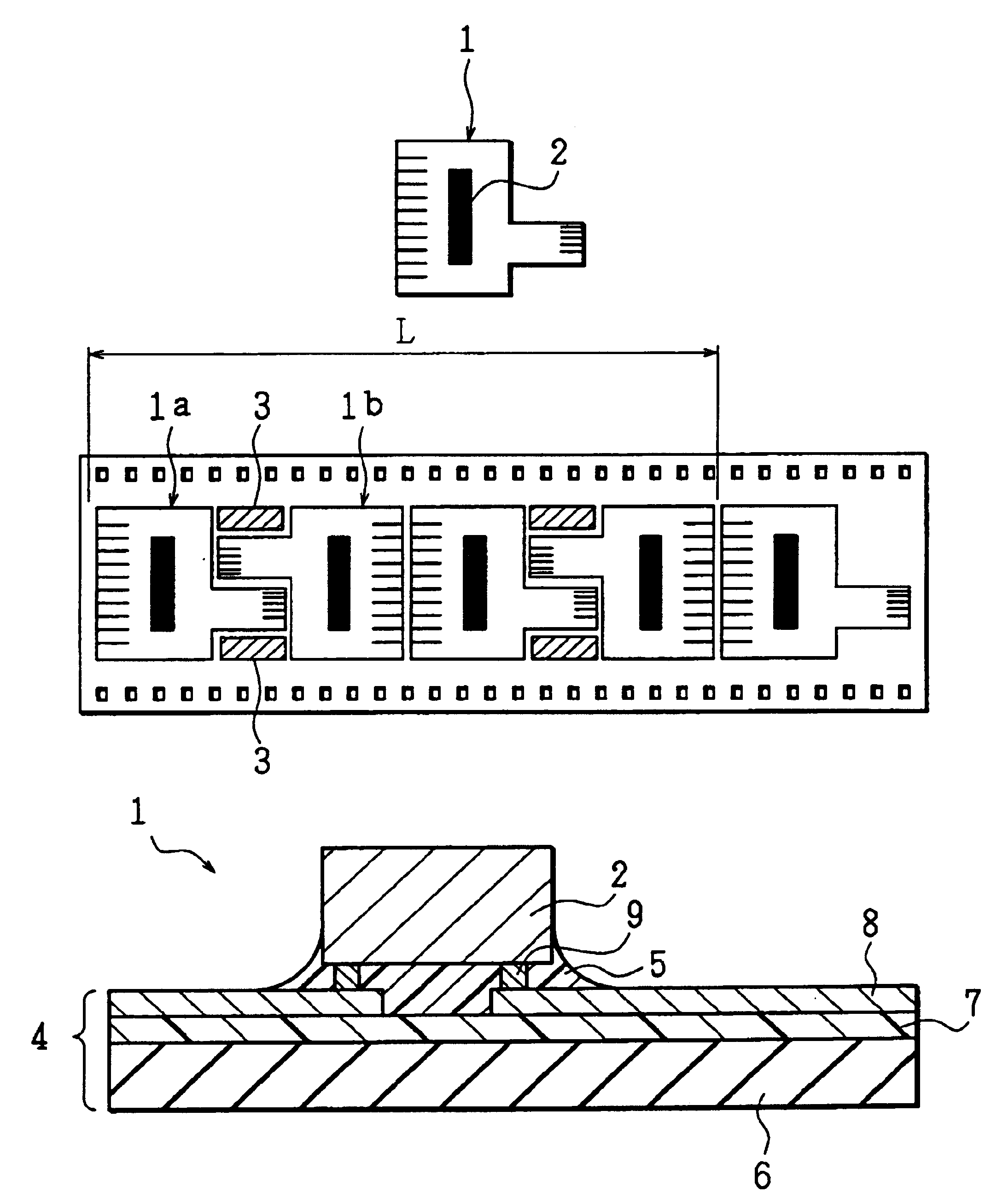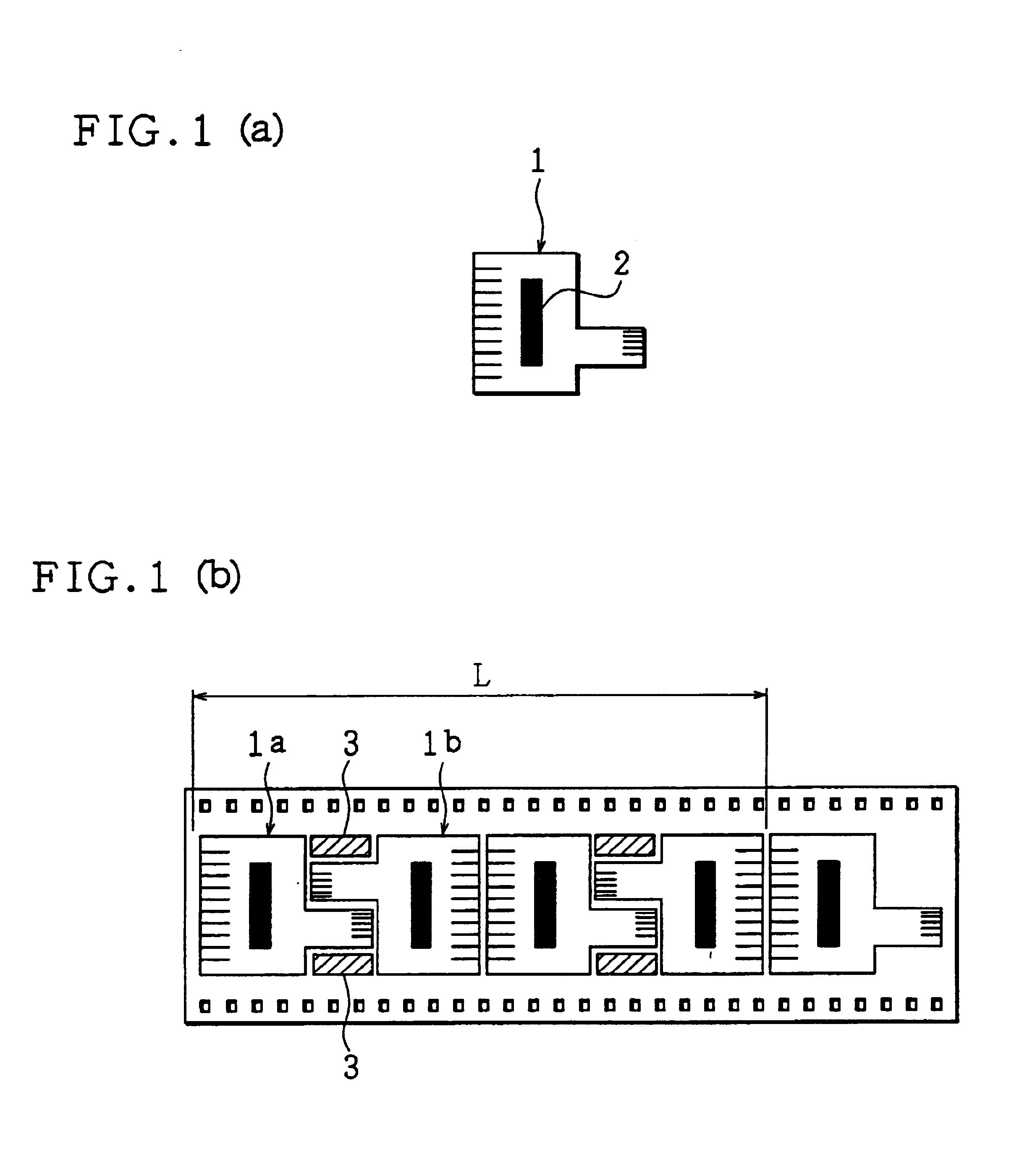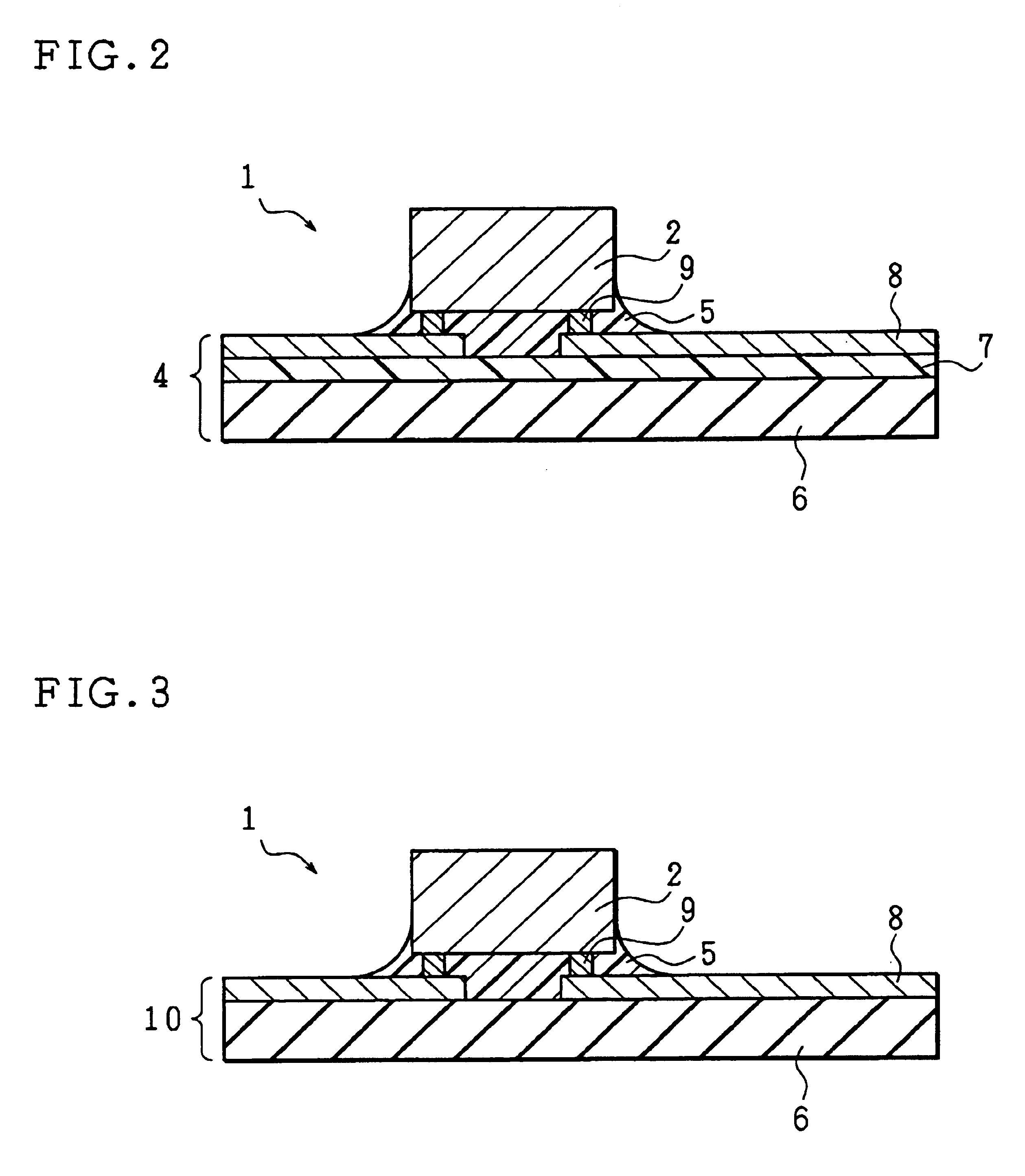Tape carrier semiconductor device
a semiconductor device and tape carrier technology, applied in the field can solve the problems of increasing the cost of tape carrier semiconductor devices in proportion to the tape area, forming a waste of manufacturing cost on the tape carrier, and wasting such areas, so as to save the manufacturing cost of tape carrier semiconductor devices
- Summary
- Abstract
- Description
- Claims
- Application Information
AI Technical Summary
Benefits of technology
Problems solved by technology
Method used
Image
Examples
embodiment 1
(Embodiment 1)
[0046]FIGS. 1(a) and 1(b) show the shape of the COF of the present embodiment and the layout of the COF patterns on the tape carrier, respectively.
[0047]A COF 1 is of the shape shown in FIG. 1(a), which is identical with the shape of the COF 51 shown in FIG. 11 (a). The COF 1 is composed of a flexible printed board on which a wiring pattern has been formed, and a semiconductor element (indicated by black-paint) 2 bonded and mounted thereon. The wiring pattern is generally composed of an inner lead connected to the electrode of the semiconductor element 2 and an outer lead connected to an external circuit. In FIG. 1(a), the inner lead is omitted for ease of explanation.
[0048]In case that the COFs 1 are designed in a layout so as to be aligned on the tape carrier in accordance with the method of the present embodiment, adjacent COF patterns 1a and 1b are positioned on the tape carrier in such a manner that one is turned by 180 degrees with respect to the other. When punc...
embodiment 2
(Embodiment 2)
[0067]FIGS. 7(a) through 7(c) show another embodiment of the present invention.
[0068]A COF 11 of the present embodiment is of the shape shown in FIG. 7(a), and used in the liquid crystal module. In the liquid crystal module, more than one COF is mounted at both ends of the liquid crystal panel, and in such a case, drivers each composed of mirror symmetrical COFs are mounted respectively at the top and bottom (right and left) of the liquid crystal panel. The arrangement of the present embodiment is particularly effective in manufacturing the mirror symmetrical COFs.
[0069]According to the arrangement of the present embodiment, as shown in FIG. 7(b), the COFs 11a which are of the same shape as that of the COF 11 of FIG. 7(a) and COFs 11b which are mirror symmetrical with respect to the COFs 11a are aligned alternately on the same tape carrier 4. The COFs 11b are positioned where the COFs 11a are reversed from left to right and turned by 90 degrees counter clockwise in the...
embodiment 3
(Embodiment 3)
[0077]FIG. 8 shows still another embodiment of the present invention.
[0078]In the present embodiment, two kinds of COFs 13 and 14 of different shapes are aligned alternately on the same tape carrier 4. The COFs 13 and 14 are not necessarily used for the same module, and they can be used for different purposes when punched out. The COFs 13 and 14 are combined in such a manner that the pattern area on the tape carrier 4 can be utilized most efficiently (that is, useless areas which are not used in manufacturing the COFs are minimized).
[0079]FIG. 8 shows a case where two kinds of COFs are formed on the same tape carrier 4, but three or more kinds of COFs may be formed on the same tape carrier 4. In such a case, a plurality of kinds of COFs are aligned in a specific order.
[0080]As has been discussed, according to the arrangement of the present embodiment, more than one kind of COFs each having a different shape are simultaneously formed on the same tape carrier. By making ...
PUM
 Login to View More
Login to View More Abstract
Description
Claims
Application Information
 Login to View More
Login to View More - R&D
- Intellectual Property
- Life Sciences
- Materials
- Tech Scout
- Unparalleled Data Quality
- Higher Quality Content
- 60% Fewer Hallucinations
Browse by: Latest US Patents, China's latest patents, Technical Efficacy Thesaurus, Application Domain, Technology Topic, Popular Technical Reports.
© 2025 PatSnap. All rights reserved.Legal|Privacy policy|Modern Slavery Act Transparency Statement|Sitemap|About US| Contact US: help@patsnap.com



